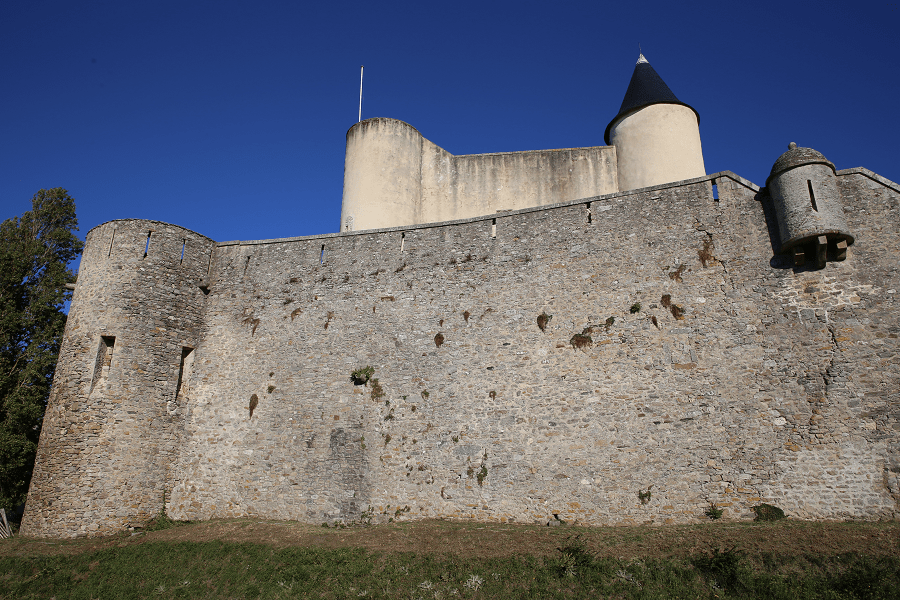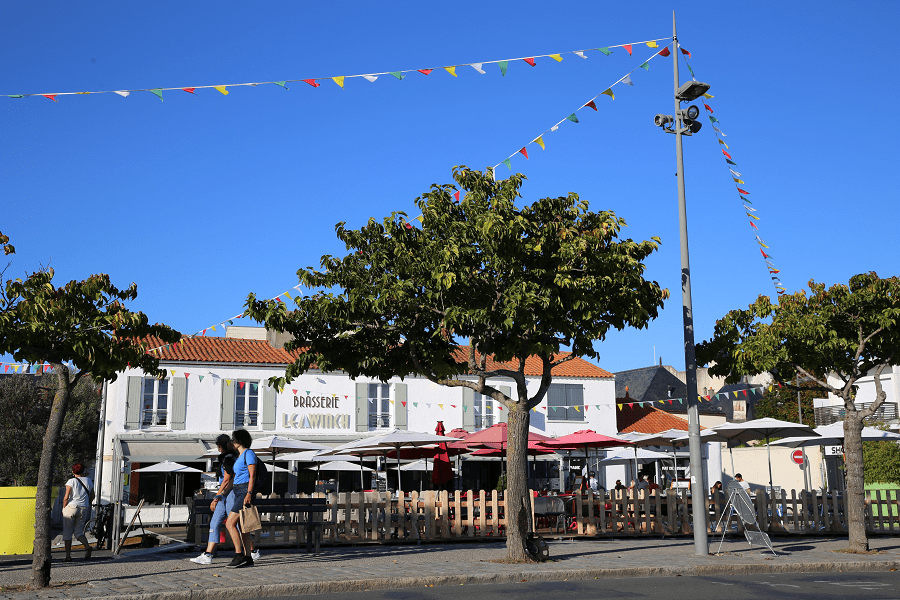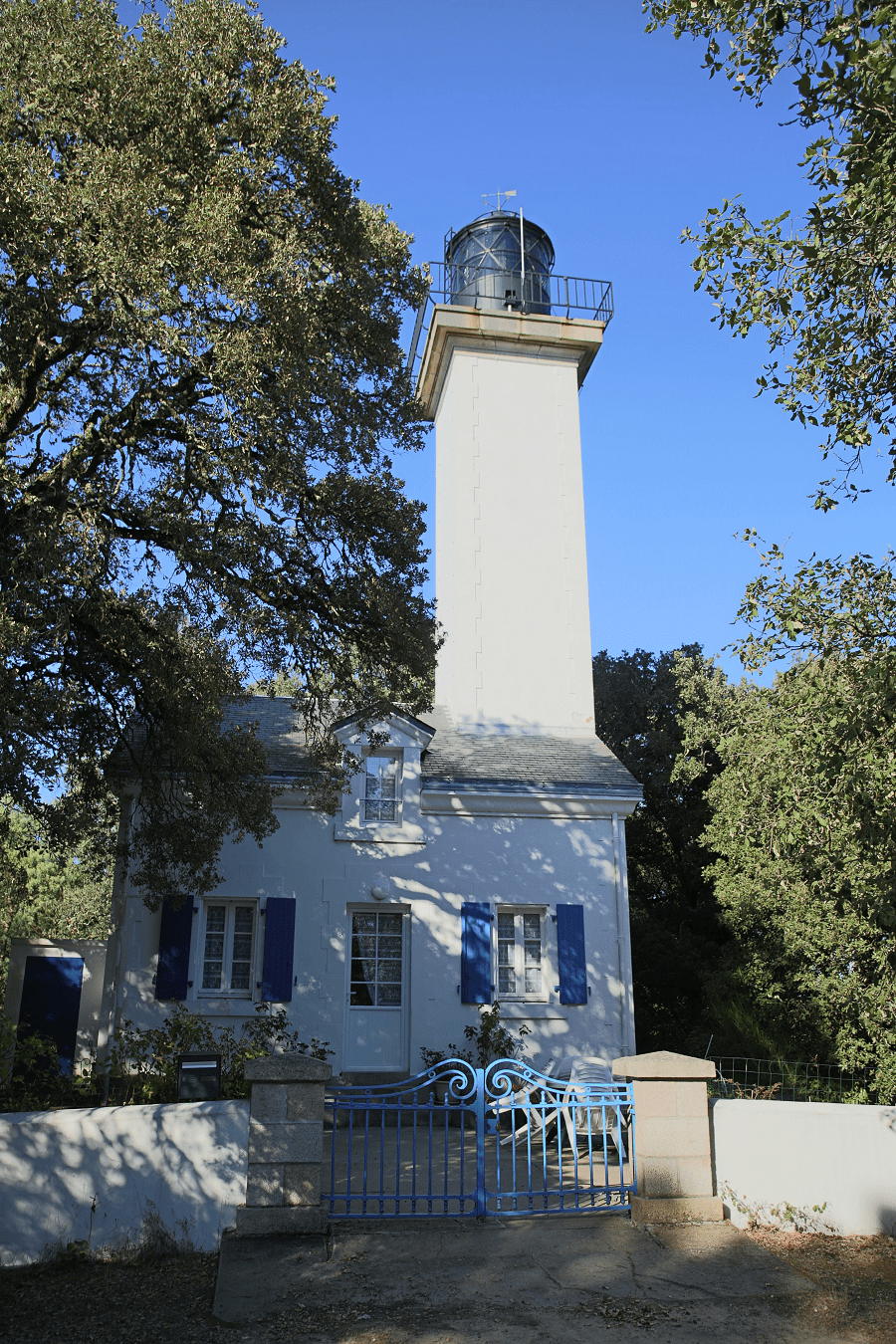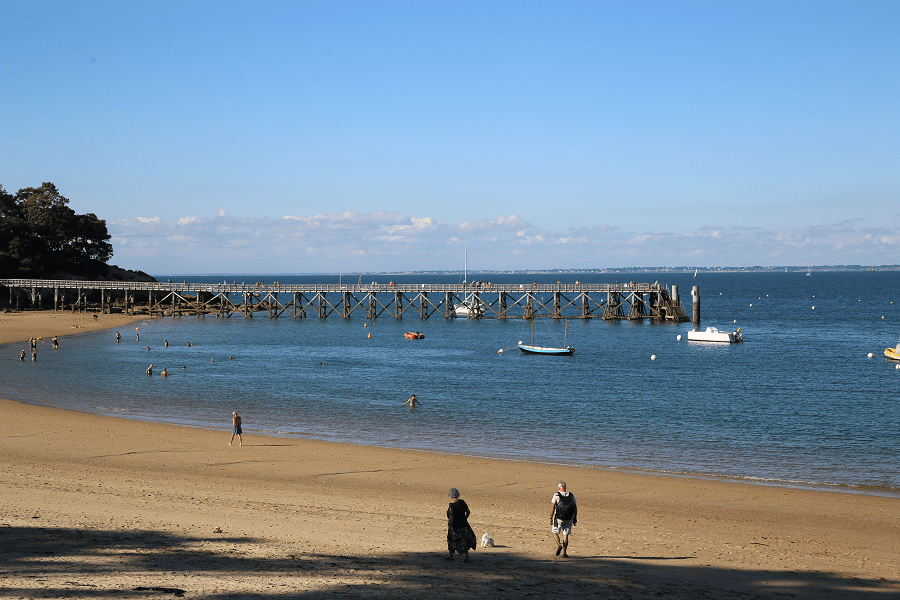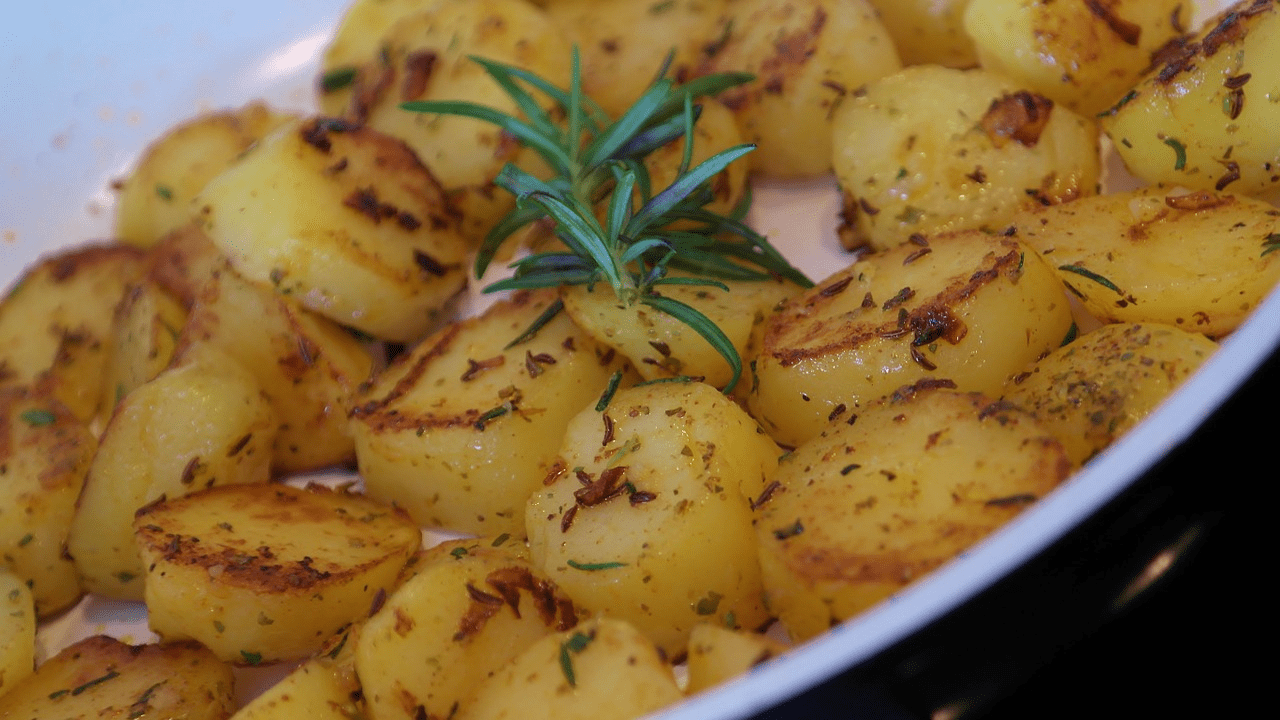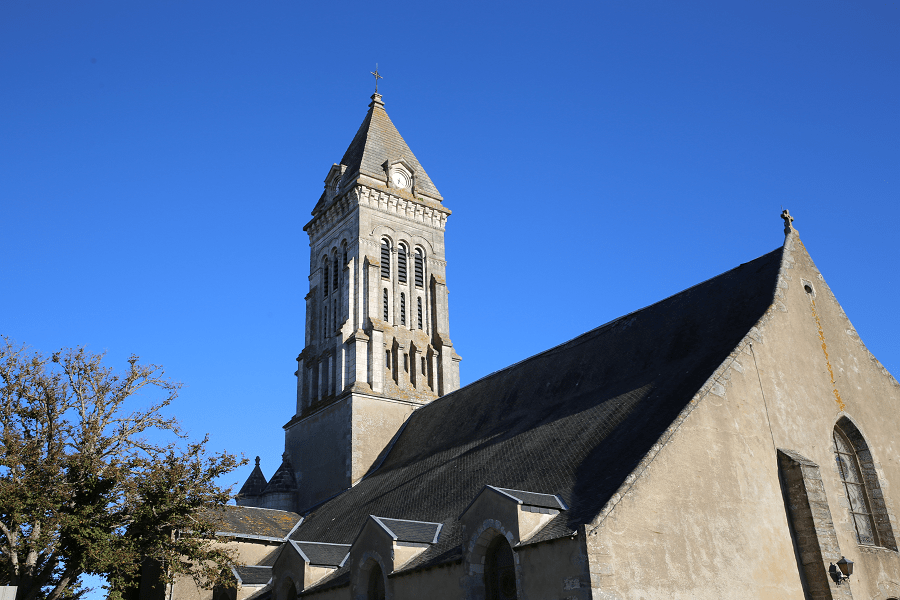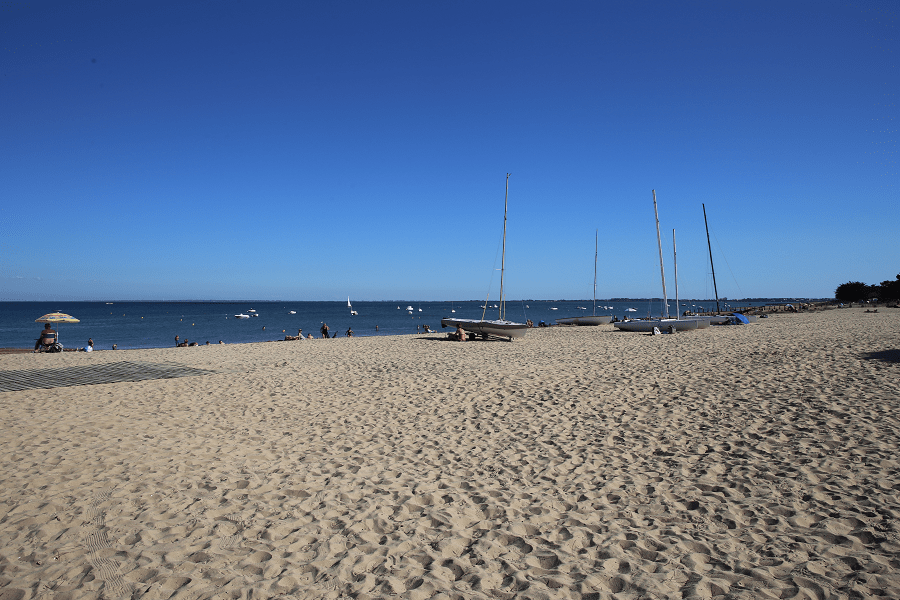Noirmoutier-en-l’Île (Fr. Noirmoutier-en-l’Île), commonly referred to as Noirmoutier, is a commune located in the northern part of the island of Noirmoutier, just off the coast of the Vendée department in the Pays de la Loire region in western France.
The town extends over the northern part of the island of Noirmoutier, formed by a rocky islet (formerly called: “island of Her”) and separated from the rest of the current island by salt marshes.
The village, the true “capital” of the island of Noirmoutier, is built on the south-eastern side of the islet, overlooking the bay of Bourgneuf. The port of Boucaud (“lock port” or “canal port”) separates the urbanized areas from the salt marshes.
A large north-western part of the territory of the town is occupied by fields devoted mainly to market gardening, and in particular a variety of potato, the famous bonnotte de Noirmoutier.
The territory of the municipality also extends over some surrounding islands and reefs, such as the Ile du Pilier in the northwest.
In addition, two towns are integrated into Noirmoutier-en-l’Île:
L’Herbaudière which is located on the northwest coast of the island, facing the Atlantic Ocean, and whose port activity makes it the second fishing port in the department, managed by the Chamber of Commerce and Industry of the Vendée.
Le Vieil, located on the north coast of the island, is a typical hamlet made up of traditional Vendée houses bordering narrow streets, and which in summer becomes a popular vacation spot for holidaymakers.
An inventor from Nantes, Brutus Villeroi, made the first test of a French submarine there on 12 August 1832. A rue du Vieil bears his name.
Tourism and sights
The Notre-Dame de la Blanche abbey (or Isle-Dieu abbey, formerly known as the Île-du-Pilier abbey) is a former Cistercian abbey, founded in the twelfth century by the monks of the Buzay abbey, and which was located on the territory of the commune of Noirmoutier-en-l’Île, on the island of Noirmoutier.
The Château de Noirmoutier is one of the town’s major landmarks and is run by the commune government. It has been listed as a monument historique by the French Ministry of Culture since 1992.
The parish church of Noirmoutier is dedicated to Saint Philbert, who founded the abbey of Noirmoutier in this place around 674. The Saracens (Arab Muslims) destroyed the abbey church in 725 or 732. The son of Charlemagne, Louis became king of Aquitaine, obtained from his father in 801 the reconstruction of the abbey and the cloister chapel.
The Jacobsen Dam was built in 1812 by Jean-Corneille Jacobsen de la Crosnière (1750-1834), son of Cornil Guislain Jacobsen (1709-1787), who settled in Noirmoutier in 1740 and was the descendant of the Dunkirk privateer of Dutch origin Michel Jacobsen. This dam allowed the development of the salt marshes, the creation of a towpath and a canal to access the port.
The Jacobsen hotel was built in the eighteenth century. The facades and roofs of all the buildings of the central body, the north wing, the south wing as well as several elements inside the central body: the interiors of the vestibule, the main staircase, the large living room on the ground floor with the two wall consoles; upstairs the vestibule, the cabinet, the anteroom, green room, and the red room are listed as historical monuments by decree of 28 June 2013.
The Sealand Aquarium in Noirmoutier-en-l’Île is a public aquarium created in 1983. An hour and a half visit, meeting with turtles and sharks, fish from the Atlantic and the tropics, entertainment with sea lions. The aquarium presents three main groups: the gallery of cold seas where we meet marine species from the Atlantic Ocean; the sea lion show; the gallery of warm seas with many corals and exotic species.
The Pointe des Dames lighthouse is located in the Bois de la Chaise, north-east of Noirmoutier Island in Vendée. It is kept as it was. It is one of the oldest Vendée lighthouses.
Festivals
Since 1993, the Regional Theater of Pays de la Loire has been organizing the Noirmoutier-en-l’Île Festival. Summer theatrical and musical festival that takes place every year in August.
Gastronomy, restaurants and the most expensive potatoes in the world
The bonnotte (sometimes spelled “bonote”, “bonotte” or “bonnote”) is a variety of early potatoes, a specialty of the Noirmoutier-en-l’Île. Along with Sirtema, Lady Christl and Charlotte, it is part of the varieties cultivated to produce early potatoes by the Coopérative Agricole de Noirmoutier. This old traditional variety is registered under the name of “bonnotte de Noirmoutier” in list C (conservation varieties) of the French official catalogue of species and varieties since 24 June 2012. Its maintenance (conservative selection) is provided by the National Federation of potato growers (FNPPPT).
Even if the bonnotte has made the reputation of Noirmoutier since its introduction on the island in the years 1920-1930 (at that time, it was called “bounotte,” “bonnette” or “bonnet”), this variety is originally from Barfleur in the Manche department. However, too fragile and required to be harvested manually, it cannot withstand the effects of the mechanization introduced in the 1960s and used for other varieties of potatoes. Its large-scale production being considered unprofitable, it is therefore stopped. We only find the bonnotte cultivated in a few gardens on the island.
Thirty years later, thanks to research carried out by the National Institute for Agronomic Research (INRA), the species was regenerated and again marketed in 1995 as a lead product for the “Coopérative Agricole de Noirmoutier”, even if currently it only represents less than 1% of its activity (i.e., five hectares out of the 550 dedicated to potato production on the island, which represents a total of 13,000 tonnes).
Small calibre, round, with firm and tender flesh, which can only be kept for a few days, it is grown in very sandy soil, enriched with seaweed, gathered in parallel mounds 70 cm wide, a unique soil profiling technique, known as the “ridge,” to heat and drain the soil and give maximum aeration to the tubers. It is harvested before maturity at 90 days, at the beginning of May, thanks to the micro-climate of the island (Gulf Stream), the bonnotte is fragile, collected by hand.
The first harvests are sometimes sold at auction and can reach unreal prices: on 20 April 1996, during an auction at the Drouot hotel in Paris, a batch of 5 kg of bonnottes was bought by an individual at the price 15,000 francs (i.e., € 500 per kilogram). In 2011, even though the price of this prime potato normalized between 5 and 6 euros per kg, it remains the most expensive on the market. In 2012, it was sold for more than 7 euros for 25 tubers.
The bonnotte is generally sold the second week of May. To keep its iodized taste, do not overcook it. It goes very well with shellfish, fish or with meat in a salt crust.
There are six Michelin list restaurants in the city:
- L’Étier, Route de l’Épine, Noirmoutier-en-l’Île, 30 – 60 EUR • Seafood
- Fleur de Sel, 10 rue des Saulniers, Noirmoutier-en-l’Île, 25 – 69 EUR • Seafood
- Le Petit Banc, 7 rue des Douves, Noirmoutier-en-l’Île, 19 – 26 EUR • Traditional Cuisine
- L’Assiette au Jardin, 9 rue du Robinet, Noirmoutier-en-l’Île, 33 – 40 EUR • Modern Cuisine
- Le Grand Four, 1 rue de la Cure, Noirmoutier-en-l’Île, 34 – 84 EUR • Traditional Cuisine
- L’Ilot Bleu, 13 rue du Robinet, Noirmoutier-en-l’Île, 39 – 51 EUR • Market Cuisine
Beaches
- Midi Beach on the island of Noirmoutier is located in the town of Barbâtre southwest of the island
- Ocean Beach is the largest sandy beach near the village and also the widest in the south of Epine village
- Luzeronde Beach on the island of Noirmoutier is located in the northwest
- Red Cove Beach (Anse Rouge) on the island of Noirmoutier is undoubtedly one of the most unspoilt coves of the island
- Souzeaux Beach is located northeast of the island of Noirmoutier in Chair Wood
- Ladies Beach in Noirmoutier is the picture postcard beach of the island
Transport and how to get to?
The nearest international airport is in Nantes.
Shortest distances by car:
From La Baule-Escoublac: 1 h 30 min (101 km) via D213
From Saint-Nazaire: 1 h 25 min (85.3 km) via D213
From Nantes: 1 h 29 min (90.6 km) via D117
From Cognac: 1 h 7 min (64.9 km) via D38
From Angoulême: 3 h 47 min (309 km) via A83
From Arcachon (tolls): 4 h 44 min (446 km) via A10
From Royan: 3 h 31 min (238 km) via D948
From Les Sables-d’Olonne: 1 h 31 min (81.6 km) via D38
From Biarritz (tolls): 5 h 51 min (579 km) via A63 and A10
From Bayonne (tolls): 5 h 42 min (565 km) via A63 and A10
From Dax (tolls): 5 h 27 min (527 km) via A10
From Saumur (tolls): 2 h 55 min (242 km) via A11
From Bordeaux: 4 h 11 min (380 km) via A10
From La Rochelle: 2 h 39 min (169 km) via D948
From Toulouse (tolls): 6 h 9 min (618 km) via A62 and A10
From Carcassonne (tolls): 6 h 52 min (708 km) via A62 and A10
From Monaco (tolls): 11 h 18 min (1,197 km) via A62
From Nice (tolls): 11 h 2 min (1,175 km) via A62
From Cannes (tolls): 10 h 50 min (1,149 km) via A62
From Saint-Tropez (tolls):10 h 49 min (1,121 km) via A62
From Marseille (tolls): 9 h 33 min (1,018 km) via A62
From Avignon (tolls): 8 h 51 min (945 km) via A62
From Montpellier (tolls): 8 h 9 min (857 km) via A62
From Béziers (tolls): 7 h 35 min (796 km) via A62
From Perpignan (tolls): 7 h 45 min (822 km) via A62
From Narbonne (tolls): 7 h 19 min (766 km) via A62
From Andorra (tolls): 8 h 18 min (798 km) via A62
Main information
Area: 20 sq. km
Population: 4 800
Languages: French
Currency: euro
Visa: Schengen
Time: Central European UTC +1
GPS coordinates: 47° 00′ 16″ N, 2° 15′ 12″ E
See here best sea and ocean resorts of France and Spain (223 objects)





